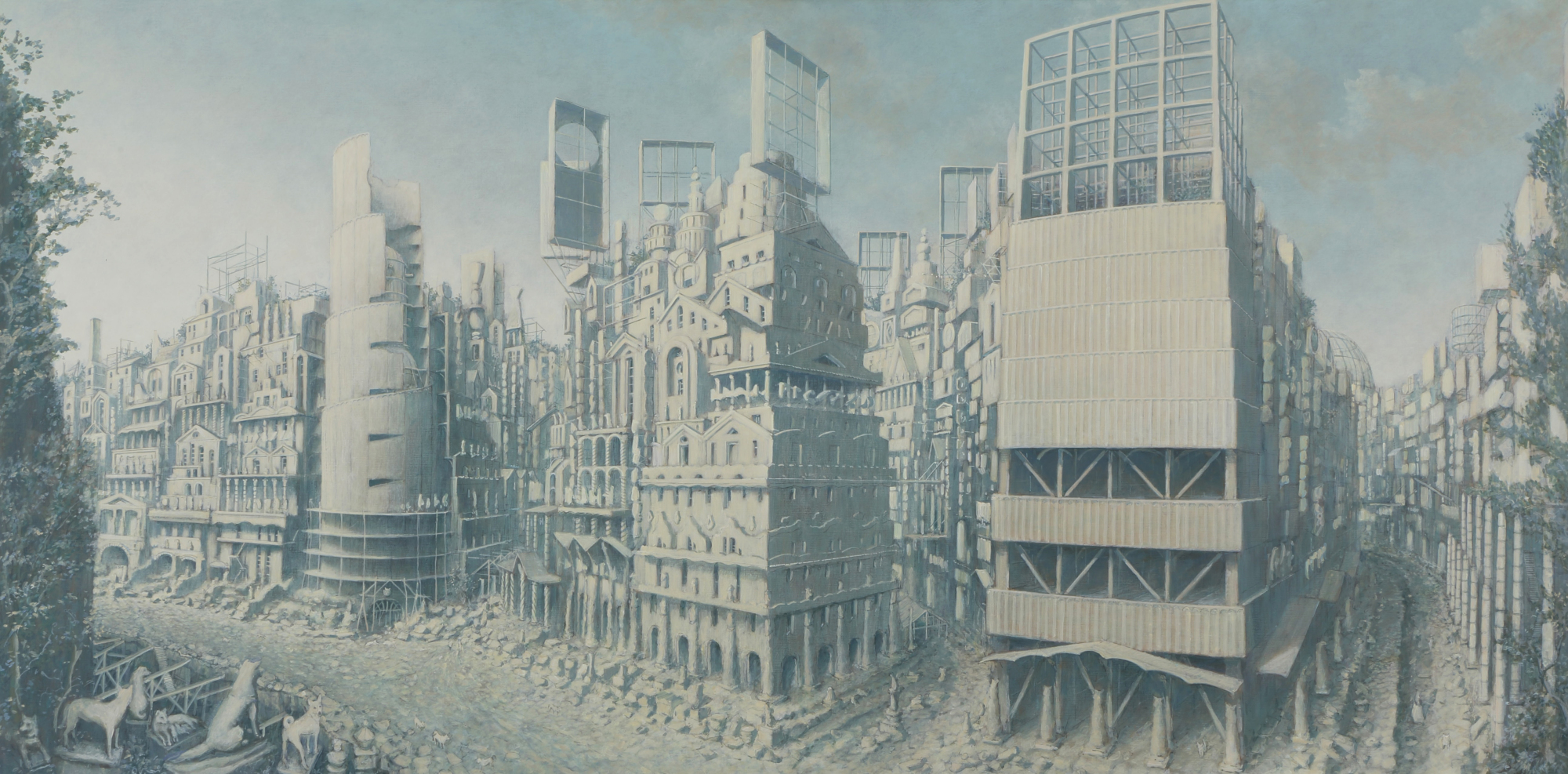One question hovering over the Shoto Museum exhibition "Beyond the End: Ruins in Art History" is "What is beauty?"
The paintings and prints in the show, gathered from museum collections around Japan, feature real and imagined scenes of decline. One of the first images that visitors will see, for example, is the 1942 painting "Ruins (From the Last Judgement)" by Tatsuoki Nambata (1905-97). It's a hellish vision of tormented semi-defined human figures, with the Colosseum of Rome burning in the background. The painting stands out as being horrific and angst-ridden in comparison with other images in the exhibition, which range from the bathetic, to the ambiguous and fanciful. "Beautiful" might be an odd term to use for such images.
There are several etchings by Giovanni Battista Piranesi (1720-78). A unique interpreter of ruins, Piranesi used the architectural remains of Roman antiquity as a starting point for his own uncanny and elaborate fantasies of a world after civilization. Populated by goats, goatherds and theatrically gesturing indigents, who are dotted around the landscapes seemingly oblivious to their monumental nature, Piranesi's mixture of fancy and detailed documentation could, in our age, be described as foreshadowing the hyperreal.



















With your current subscription plan you can comment on stories. However, before writing your first comment, please create a display name in the Profile section of your subscriber account page.